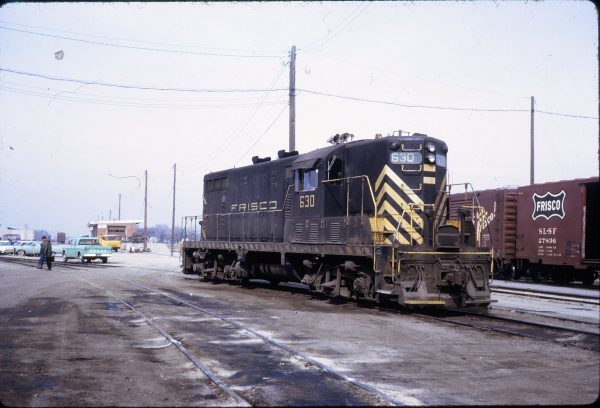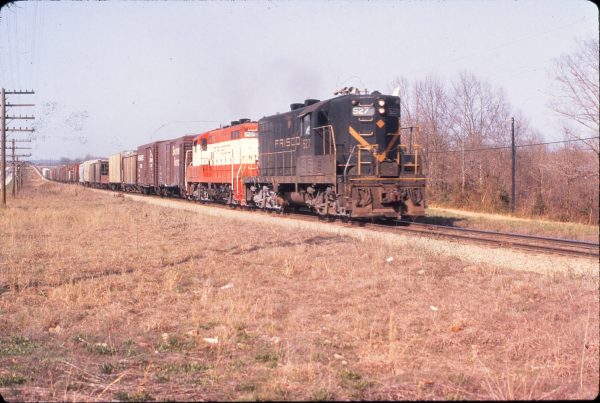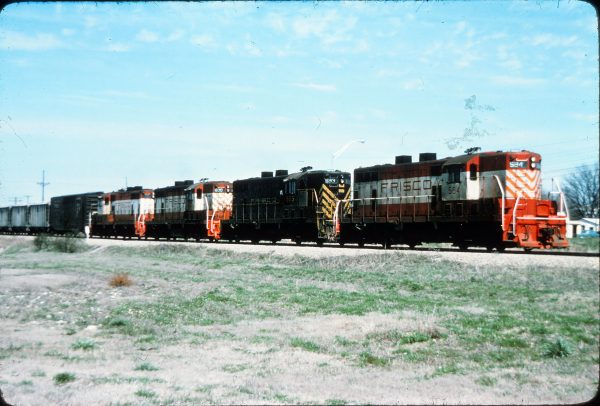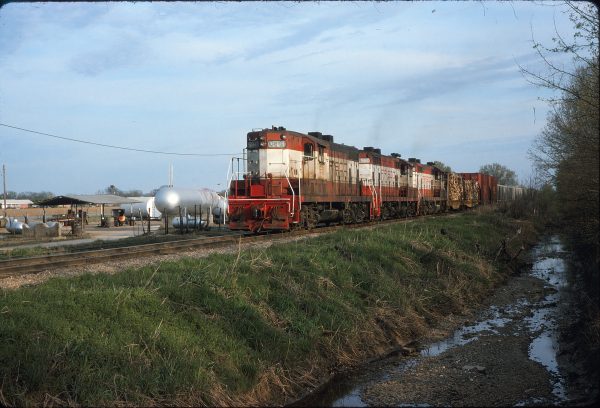Tag Archives: GP7
GP7 582, SW1500 333 and Caboose 1270
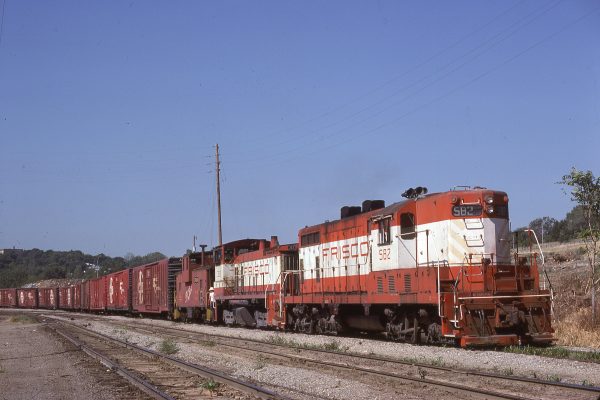
GP7 582, SW1500 333 and Caboose 1270 at Rosedale, Kansas on August 4, 1978 (Bob Wilt).
GP7s 590 and 629
GP38-2 665, F9B 151, GP7 562 and GP38AC 653
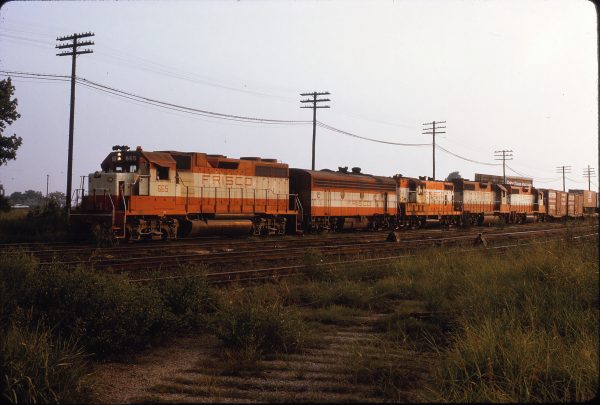
GP38-2 665, F9B 151, GP7 562 and GP38AC 653 Memphis, TN circa September 1973.
Location is Memphis, Tennessee.
The train is southbound (geographic northeast at this point) on the Memphis Subdivision. It has just crossed the Mississippi River into the city. The train’s headend is located between Shelco (Shelby County), mile post 483.1 (MP 483.1) and Union Railway crossing, MP 483.6. Just off the single track Mississippi River Bridge the Frisco’s main becomes double track from Shelco to Tennessee Yard, MP 496.4.
The trailing unit of the five locomotive unit consist is Frisco GP38AC 657.
The tracks in the foreground belong to the Missouri Pacific (MP) Railroad, the St. Louis Southwestern (SSW) or Cotton Belt and the Chicago, Rock Island and Pacific (CRIP) or Rock Island. These tracks have just come off their two track Harahan Bridge over the Mississippi River. Just ahead is their Kentucky Street Interlocking.
Just beyond The Frisco, MP, RI, SSW and the Southern, Louisville and Nashville will enter the Broadway corridor of multiple tracks across central Memphis. This will extend eastward to K C Junction. At K C Junction the lines separate to their respective routes to the north, northeast, east and southeast.
Visible in the distance to the left of the lead locomotive’s pilot are the backs of the northbound highway signs at the Interstate 55 (I-55) (west and south), E. H. Crump Boulevard (east), Riverside Drive (north) clover-leaf interchange. The westbound white automobile is on West E. H. Crump Boulevard just before it turns into I-55.
View is looking southwest.
Thanks to Mark Davidson for the details.
GP7s 527 and 525
GP7s 594, 593 and 600
GP7s 608, 604 and 602
GP7s 581, 590 and 599
GP7s 505 and 522

GP7s 505 and 522 Enid, Oklahoma in July 1974.
Location is Enid, Oklahoma.
The locomotives are in the Mechanical Department’s service tracks area at Enid Yard. To the right the lower front pilot of GP7 505 is the facility’s locomotive turntable. The turntable is a holdover from the former roundhouse facility that sat just to the north. The shop stood between North Monroe Street on the east and North Quincy Street on the west. It was bounded by West Locust Street on the north and West Chestnut Street on the south.
Visible to the northwest are some of the silos on the south half of the Enid Terminal Elevator. This was the first large terminal elevator constructed in the city. It was built in 1925-1926 – central silos (1,100,000 bushels), with additions in 1931 – north silos (800,000 bushels) and 1959 – large diameter south silos (500,000 bushels) and 1987 – north metal bins (678,000) . The elevator is 594 feet long by 60 feet wide, the silos are 100 feet tall, with a 10 foot tall gallery above and its central headhouse stands 190 feet tall. The central headhouse is just off the right side of the photograph. The elevator has a capacity of 3,078,000 bushels. It is located at 1015 North Van Buren Street.
View is looking northwest.
Special thanks to Mark Davidson.
GP7 617 and GP35 702
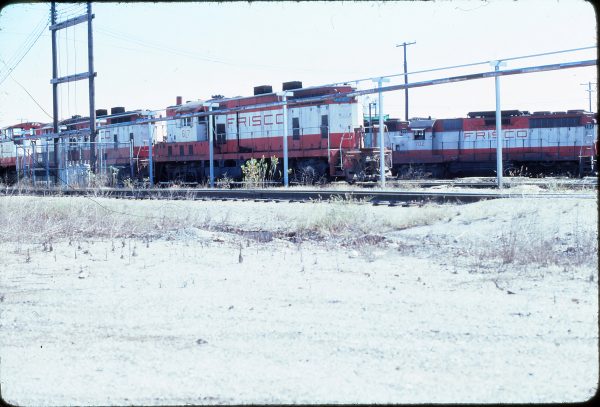
GP7 617 and GP35 702 Springfield, Missouri in October 1978.
Location is Springfield, Missouri.
SW1500 353, GP7s 526 and 617 are sitting on the diesel pocket track east of the Springfield Diesel Shop. GP35 702 and SD45 905 are sitting on the service tracks east of the locomotive service track shed. The track in the foreground is the West Shops lead and Clinton Subdivision main track. The overhead horizontal pipes are the insulated steam and return cold water lines supplying the wash rack pump house out of view to the east (left).
The power line poles and transformers supply electricity to the pump house for the locomotive wash rack. A portion of the wash rack with its green corrugated plastic overspray shield is visible on track 2 in the distance above SD45 905. Still further in the distance above that is the elevator leg, distribution head and piping at the Western Feed and Milling Company (today ADM Animal Nutrition) feed mill at 1300 West Locust Street.
View is looking southeast.
Special thanks to Mark Davidson.
